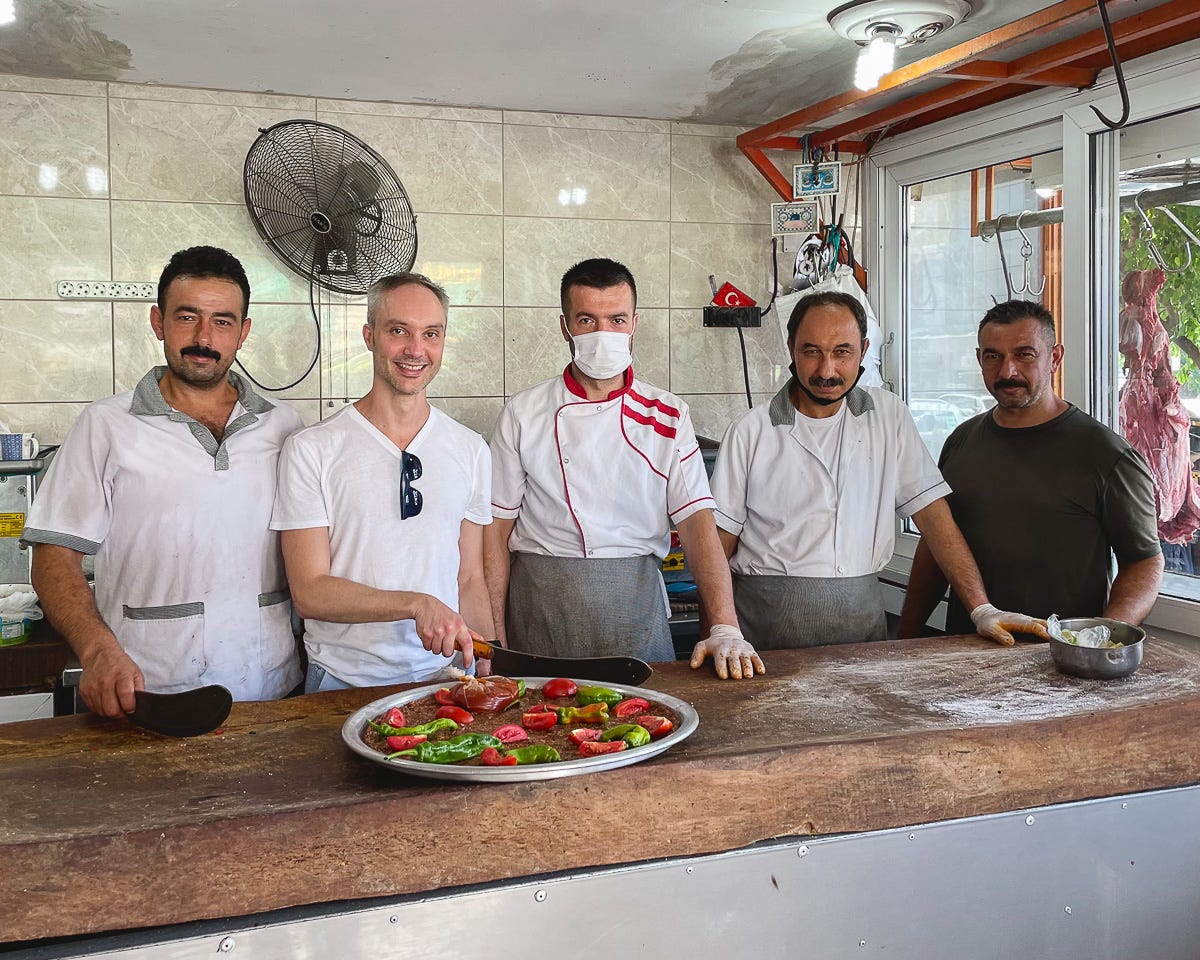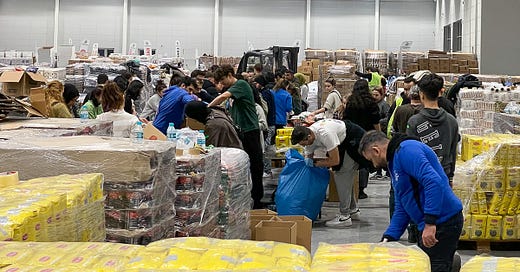It’s been a while since you last heard from me. It wasn’t my intention to leave it months since the last newsletter but, alas, life happens. I was planning to make a fresh start this month, with new recipes and stories from Istanbul lined up. While I hope to return to that very soon, I hope you’ll forgive me for this somewhat unusual “comeback” email. In the current environment, it cannot be otherwise.
Just over two weeks ago, on Monday morning at 04.17 local time, as people were sleeping peacefully in their beds, a violent earthquake struck south-eastern Turkey and northern Syria. It was followed by another one of near equal strength a few hours later. Last night, another strong earthquake added further terror for those on the ground.
While living in Turkey carries an ever-present risk of earthquakes, no one was quite prepared for the scale of devastation. Entire cities have been reduced to little but piles of rubble. Tens of thousands have been confirmed dead, with many bodies – perhaps more than those already found – still in the ruins of the buildings they once called home. May their memory live on.
A disaster like this affects us all. Still, as humans, we are more sensitively attuned to events affecting our immediate surroundings. For me, this hit right at the heart.
My Antakyan story
I first visited Antakya six years ago, for the wedding of close friends who are from the region. It was a trip – and a wedding – like no other I’ve ever experienced. The friendliness, the hospitality, the sense of community was incredible. Add in the sheer history of the city and the land it was built upon, and it was truly a unique place to visit.
Since then, our friends have taken to spending summers with family there. My partner and I have come to visit every year, falling more in love with the place and the people for every visit.

Perhaps more than anything, Antakya is known for its incredible food. Over the years, I’ve been introduced to every part of their food culture. Tray kebabs, cheeses and künefe – which no one makes better than in Antakya. Incredible home made ingredients like pomegranate molasses and red pepper paste. On our last visit six months ago, we were lucky enough to be able to contribute to a community feast for the poor.
Today, there’s virtually nothing left. My friends’ immediate family are fortunately ok, but everyone’s lost many friends and members of the extended family. Homes are gone. Many have already taken the first steps toward a new life elsewhere.

I will always remember Antakya in its sunny glory during happier days, not the piles of rubble that have been all over the news these past couple of weeks. I’ve included a couple of pictures from earlier visits above, and will certainly share more in the future. As will I of stories from my visits there. If you want to get an image of the sheer destruction in the area, however, this New York Times article (unlocked) from one of the first days gives you an idea.
How to help
The situation for those still in the earthquake zone, an area roughly the size of Britain and with a pre-earthquake population of more than 13 million, remains very difficult. Tents are still few and far between. Many have been living in their cars or outdoors. Some, left with no other option, have even moved back into damaged homes. There is no local economy and nothing to purchase. Everyone depends on donations and volunteers for water, food, sanitary needs and shelter.
Many abroad have already donated generously to the rescue and aid efforts, for which we are all extremely grateful. In Istanbul, many have volunteered and even more donated to the municipality’s aid efforts. I’ve visited the centre myself and seen the incredible energy and dedication of volunteers, even after more than a week of little to no sleep. Thanks to everyone’s efforts, so many people have received food, clothing and other necessities.

Right now, aside from shelter and ongoing supplies of food, the biggest need is for sanitary equipment, especially for women and children. Toilets, showers, hygiene products, that sort of thing. Acquaintances of mine with a strong network in the region have set up a campaign for this particular purpose. They’ve got a great network in Turkey which makes the necessary purchases, and people I personally know are involved in the transportation and delivery. As far as I’m concerned, this is the closest I’ll be able to get to guaranteeing that 100% of your donation goes where it’s most needed, and fast.
If you would like to contribute to this campaign, you can find it by clicking the button below. Every donation is welcome, no matter how big or small.
There are also many other ways of contributing from abroad, for example:
Istanbul Metropolitan Municipality does much of the aid work in Hatay, the region Antakya is a part of. Any donations here will be used for food, tents etc. in this region.
UNHCR contributes in both Turkey and Syria (both refugees and others).
UNICEF helps children affected by the earthquake.
A final note
This newsletter is very different from what you’ve been receiving from me in the past, and from what you will be receiving going forward. Still, I hope you appreciated this update from on the ground in Turkey. It would have been wrong not to address it at this time.
The impact of the earthquakes on Turkish society will be a big part of our lives for a long time to come. Some of those developments will form a natural part of my despatches from Istanbul. But over time, the focus will return to what I want this newsletter to be: A place to share the incredible food and food cultures of Turkey, the Middle East and beyond.
What to expect
My aim is for these newsletters to eventually go out weekly. With everything going on, I’m not able to commit to that just yet, but I hope to become a more regular presence in your inbox going forward. Until I’m able to make that commitment, all editions of this newsletter will be free to read and receive.
Expect unique recipes, essays on the local food cultures and origins of dishes, tips on ingredients and an insight into life in Istanbul. When time allows, I expect to continue to add new recipes to my blog A kitchen in Istanbul as well. Over time, however, most of my new recipes will live on this newsletter rather than the blog.
It’s with that in mind that I’ve given the newsletter its own name. Meze represents what’s unique about the food culture of this region – the sharing, the many dishes, the history, the social nature of cooking, the relentless focus on making the best of each ingredient. All of which will be essential parts of this newsletter going forward.
I look forward to keeping in touch.
With warm regards from Istanbul,
Vidar




